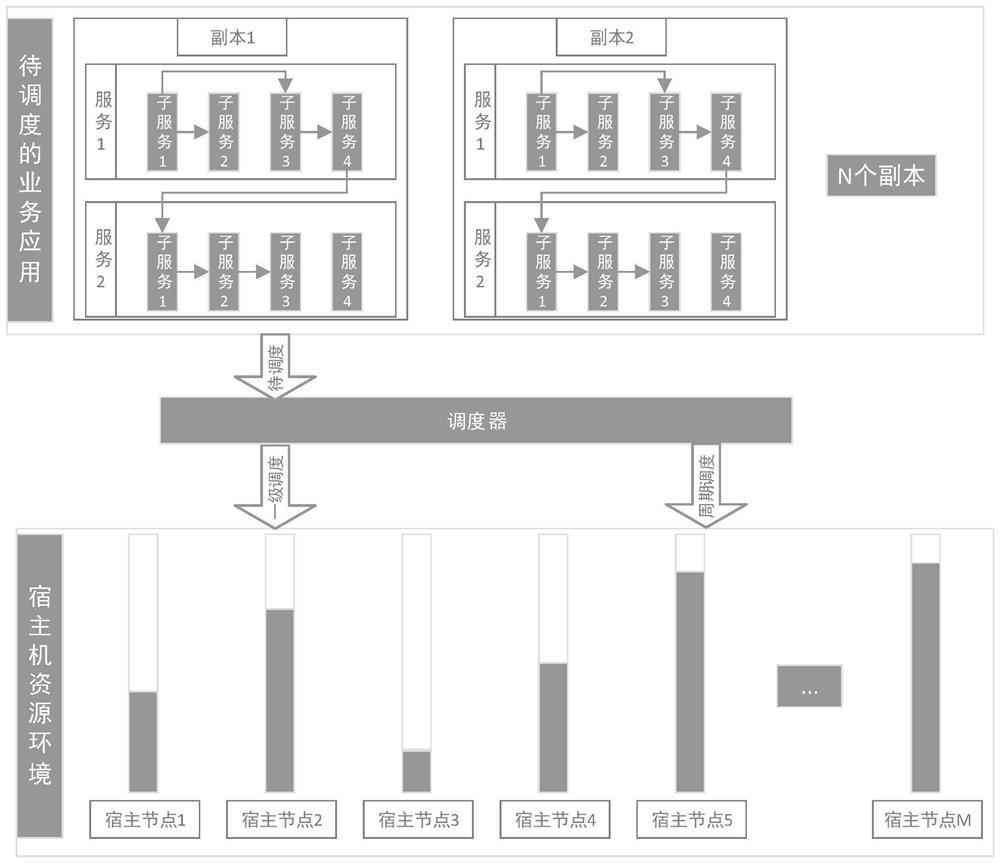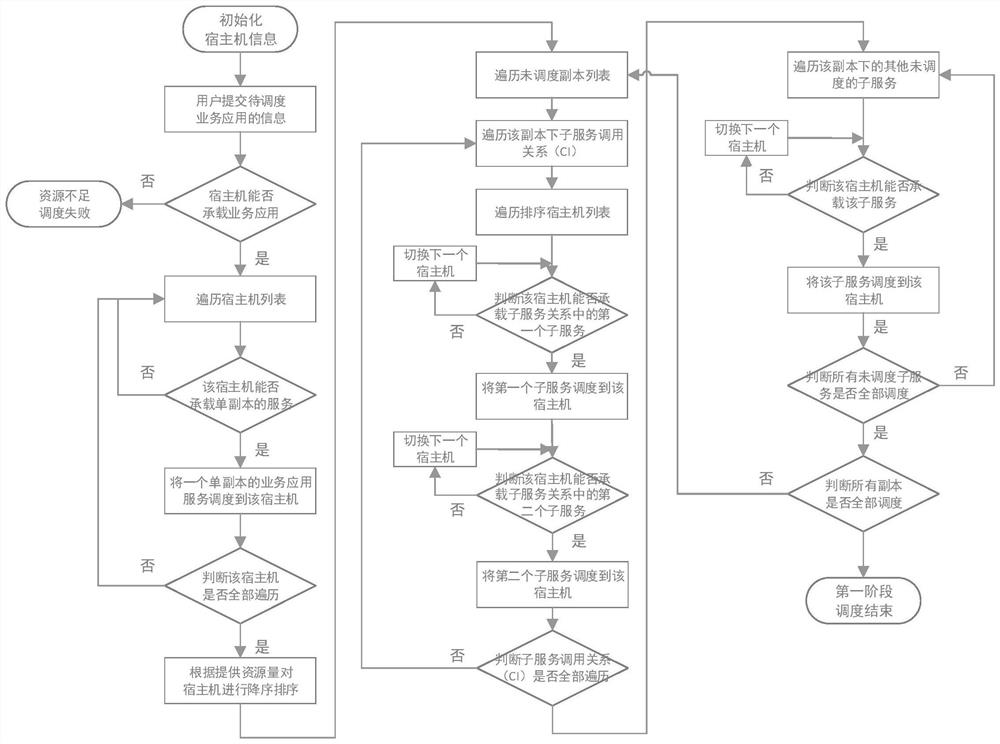A service scheduling method and its implementation system based on microservice architecture
A scheduling method and technology of micro-services, applied in instrumentation, computing, electrical digital data processing, etc., can solve cross-server and even cross-data center calls, reduce business application performance, increase load balancing and API gateway time and resource overhead, etc. problems, to achieve high availability, improve performance, and ensure the effect of calling performance
- Summary
- Abstract
- Description
- Claims
- Application Information
AI Technical Summary
Problems solved by technology
Method used
Image
Examples
Embodiment 1
[0047] A service scheduling method based on a microservice architecture. The physical resource environment implemented by the method includes several host computers. The business application to be scheduled includes several copies to be scheduled. Each copy includes several services. Includes several sub-services; specifically, figure 1 As shown, the physical resource environment includes M hosts, and the resources that each host can provide are different. Gray represents resources that have been used, and white represents resources that can be provided. The business application to be scheduled includes N service copies to be scheduled, and each copy contains the same service and sub-services, and there is an invocation relationship between the sub-services.
[0048] Including the following steps:
[0049] (1) First-level scheduling: According to the resource conditions of several host machines and the basic information of the business applications to be scheduled, the sub-se...
Embodiment 2
[0053] According to the service scheduling method based on the microservice architecture described in Embodiment 1, the difference is that:
[0054] Before step (1) is executed, initialize host information and service information of business applications;
[0055] Initialize the host machine information, including the host machine set PH and the resource amount set R that each host machine can provide, PH={PH 1 ,PH 2 ,PH 3 ,...,PH m ...,PH M}, a total of M hosts, PH m refers to the mth host computer; R indicates the quantity of quantifiable standard resources that the host computer can provide, R={R 1 , R 2 , R 3 ,...,R m ..., R M},R m refers to the amount of resources that the mth host can provide;
[0056] Initialize the service information of the business application, including the number N of copies of the business application to be scheduled, the service set S included in the business application to be scheduled, and the sub-service set S included in each servi...
Embodiment 3
[0058] According to a service scheduling method based on a microservice architecture described in Embodiment 2, the difference is that:
[0059] In step (1), according to the resource conditions of several host machines and the basic information of the business application to be scheduled, the sub-services that have calling relationships between different replicas are scheduled to the same host machine, such as figure 2 As shown, the scheduler completes the scheduling process of business application services based on information such as the resources that the host can provide, the calling relationship of each sub-service in the business application service, and the resources occupied by each sub-service, including the following steps:
[0060] Step a: Determine whether the total amount of resources that all hosts can provide can carry the business application services of all copies. If not, the scheduling fails and ends; otherwise, start scheduling and go to step b;
[0061] ...
PUM
 Login to View More
Login to View More Abstract
Description
Claims
Application Information
 Login to View More
Login to View More - R&D
- Intellectual Property
- Life Sciences
- Materials
- Tech Scout
- Unparalleled Data Quality
- Higher Quality Content
- 60% Fewer Hallucinations
Browse by: Latest US Patents, China's latest patents, Technical Efficacy Thesaurus, Application Domain, Technology Topic, Popular Technical Reports.
© 2025 PatSnap. All rights reserved.Legal|Privacy policy|Modern Slavery Act Transparency Statement|Sitemap|About US| Contact US: help@patsnap.com



